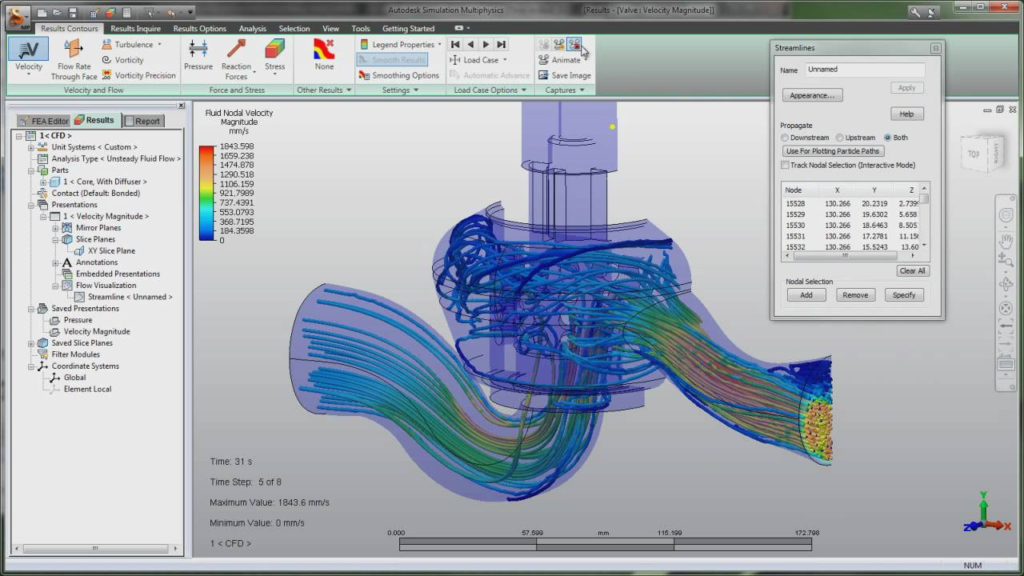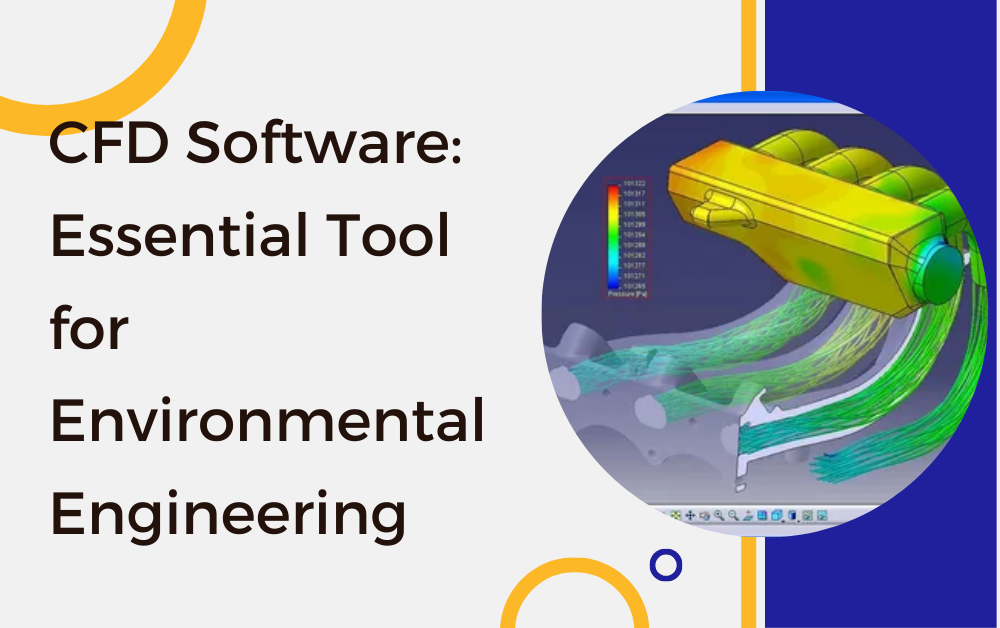Environmental engineering is a vital field that focuses on protecting human health and improving the quality of the environment. It involves designing systems and processes to manage and mitigate the impacts of human activities on the ecosystem. As environmental challenges grow, engineers increasingly rely on advanced tools to enhance their designs and ensure compliance with regulations. One such tool that has become indispensable is Computational Fluid Dynamics (CFD) software. This article explores why CFD software is a must-have for environmental engineering and how it can help engineers address complex environmental problems.
Understanding CFD Software
CFD software uses numerical methods and algorithms to analyze fluid flow, heat transfer, and related phenomena. This powerful tool simulates how fluids (liquids and gases) interact with surfaces and objects. By providing a detailed visualization of fluid behavior, CFD software allows engineers to predict how systems will perform in real-world conditions. This capability is particularly important in environmental engineering, where understanding fluid dynamics is crucial for designing effective solutions.
The main advantage of using CFD software is its ability to simulate conditions that would be difficult or impossible to recreate in physical experiments. Engineers can model various scenarios, adjust parameters, and analyze the results quickly and efficiently. This flexibility saves time and resources while providing valuable insights that lead to better designs.
Note – Are you ready to elevate your environmental engineering projects? Explore the capabilities of advanced CFD software with DDSPLM. Our team of experts is here to help you choose the right software solutions tailored to your needs. Don’t miss out on the opportunity to enhance your designs, streamline processes, and make a positive impact on the environment. Contact us today to learn more about how CFD software can transform your engineering projects!
Key Benefits of Using CFD Software in Environmental Engineering
1. Enhanced Design Efficiency
One of the most significant benefits of CFD software in environmental engineering is its ability to enhance design efficiency. Traditional methods of testing and prototyping can be time-consuming and expensive. By using CFD software, engineers can simulate multiple design iterations without the need for physical prototypes. This capability allows for faster decision-making and reduces the time it takes to bring a product or solution to market.
Moreover, CFD simulations can identify potential design flaws early in the process. Engineers can test various scenarios and make adjustments to their designs before any physical work begins. This proactive approach helps prevent costly mistakes and ensures that the final product meets performance and regulatory requirements.

2. Improved Environmental Impact Assessments
Environmental impact assessments (EIAs) are critical in evaluating the potential effects of projects on the environment. CFD software can significantly improve the accuracy and reliability of these assessments. By modeling the flow of air, water, and pollutants, engineers can predict how a project will impact the surrounding environment.
For example, CFD software can simulate how air pollutants disperse in the atmosphere or how wastewater flows through treatment facilities. These simulations provide valuable data that can inform decision-making and regulatory compliance. By accurately assessing environmental impacts, engineers can develop strategies to mitigate adverse effects and promote sustainable practices.
3. Effective Pollution Control
Pollution control is a major focus in environmental engineering, and CFD software plays a crucial role in designing effective pollution control systems. Engineers can model the behavior of pollutants in various environments, allowing them to optimize the design of treatment facilities, ventilation systems, and exhaust systems.
For instance, CFD simulations can help engineers design more efficient scrubbers for industrial processes, ensuring that harmful emissions are effectively reduced before they enter the atmosphere. By analyzing different scenarios, engineers can determine the most effective solutions for controlling pollution and meeting regulatory standards.
4. Streamlined Water Resource Management
Water resource management is another critical area where CFD software proves invaluable. As the demand for clean water continues to rise, engineers must develop innovative solutions to manage and conserve water resources. CFD simulations can optimize the design of water treatment plants, distribution systems, and stormwater management systems.
Using CFD software, engineers can analyze the flow of water through treatment processes, ensuring that contaminants are effectively removed. They can also model the behavior of stormwater runoff in urban areas, helping to design effective drainage systems that reduce flooding and protect water quality. This streamlined approach to water resource management ultimately leads to more sustainable practices and better outcomes for communities.
5. Real-Time Monitoring and Analysis
In addition to design and simulation capabilities, many CFD software packages offer real-time monitoring and analysis features. These tools enable engineers to collect data from ongoing projects and analyze it to optimize performance. For example, environmental engineers can monitor air quality, water quality, and pollutant levels in real time, allowing them to make informed decisions quickly.
This ability to analyze data in real time enhances the effectiveness of environmental management systems. Engineers can respond to changes in environmental conditions promptly, ensuring that regulatory standards are met and public health is protected. Real-time monitoring also allows for adaptive management strategies, enabling engineers to adjust their approaches based on actual performance.
Conclusion
CFD software has become an essential tool for environmental engineering, offering numerous benefits that enhance design efficiency, improve environmental impact assessments, and streamline pollution control and water resource management. By utilizing CFD simulations, engineers can better understand complex fluid dynamics, leading to more effective and sustainable solutions for environmental challenges.
As environmental issues continue to evolve, the need for advanced tools like CFD software will only grow. Engineers equipped with this powerful software can design systems that protect human health, preserve natural resources, and promote sustainability. Embracing CFD software is not just an option; it is a necessity for those committed to making a positive impact on the environment.
Key Takeaways
- Enhanced Design Efficiency: CFD software allows for quick simulations and early identification of design flaws.
- Improved Environmental Impact Assessments: Accurate modeling of fluid dynamics aids in assessing potential environmental impacts.
- Effective Pollution Control: Engineers can design optimized pollution control systems using CFD simulations.
- Streamlined Water Resource Management: CFD helps optimize designs for water treatment and distribution systems.
- Real-Time Monitoring and Analysis: Real-time data collection and analysis enhance decision-making in environmental management.
In summary, CFD software is an indispensable resource for environmental engineers striving to develop innovative solutions and meet the challenges of a changing world. Its ability to simulate complex scenarios and provide valuable insights ensures that engineers can design systems that are not only efficient but also environmentally responsible.
For more insightful articles related to this topic, feel free to visit mstravaloo.com







